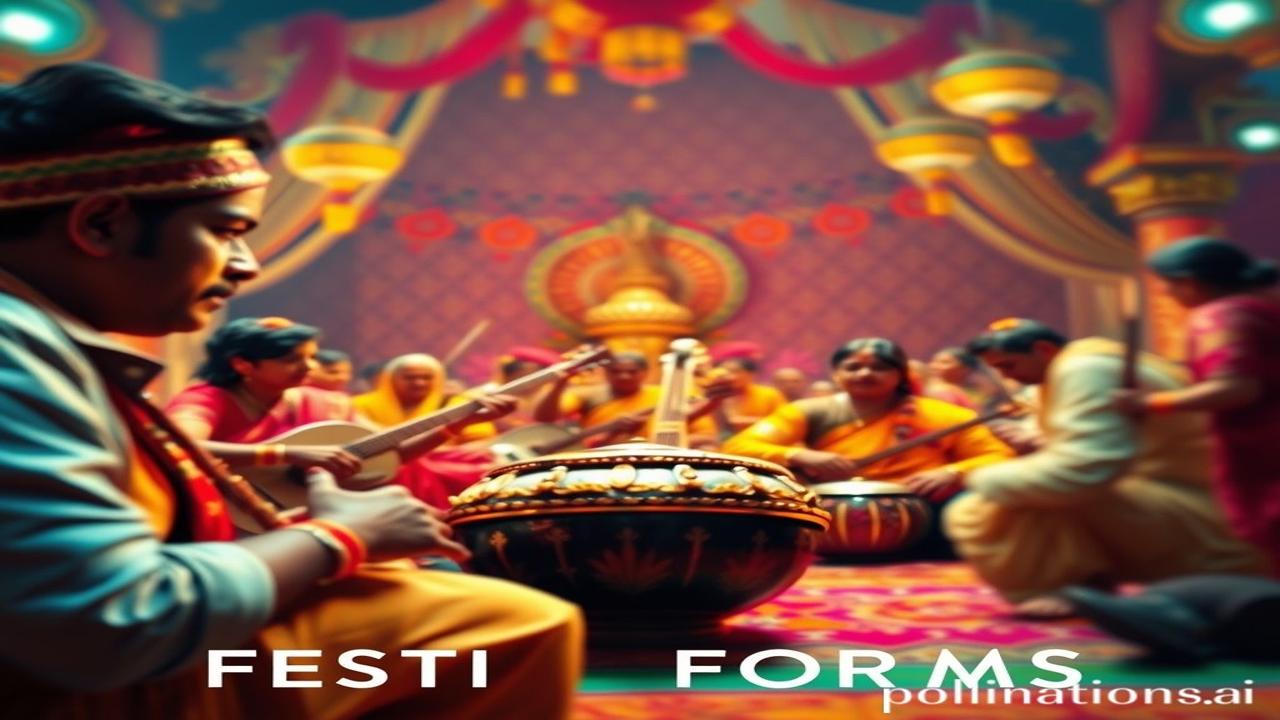Rang Barse, Man Tarase: A Journey Through India’s Seasonal and Festive Music
Kabhi socha hai, jab Holi ki dhun hawa mein ghulti hai, toh kitne saalon ka itihaas, kitni sanskriti, kitne sapne saath lekar aati hai? Imagine, 5000 saal pehle ki Holi bhi aisi hi rangeen rahi hogi, bas tab rang gulaal ki jagah tesu ke phoolon se banta tha. Let’s dive deep into the soul of India, where every season and festival has its own unique symphony.
Sangeet Ka Itihas: When Seasons Spoke Through Melodies
India, a land of vibrant colors and diverse cultures, has always been intrinsically linked to its seasons and festivals. Aur yeh sabhi, kahi na kahi, sangeet se jude hue hain! From the Vedic era, music has been an integral part of our rituals and celebrations. Think about it, the ancient Samaveda itself is a collection of hymns meant to be sung.
Vedic Origins (1500-500 BCE): The foundation of Indian classical music was laid during this period. Chants and hymns were integral to religious ceremonies, marking the cycle of seasons and agricultural prosperity. Imagine priests chanting mantras in perfect unison, their voices resonating through the open fields, invoking the blessings of the gods for a bountiful harvest.
Medieval Period (600-1800 CE): This era witnessed the evolution of distinct regional music forms associated with specific festivals. Qawwalis gained prominence during Sufi festivals like Urs, creating an atmosphere of spiritual ecstasy. Bhajans and Kirtans became synonymous with devotional gatherings, especially during festivals like Janmashtami and Diwali.
Colonial and Post-Independence Era: While western influences crept in, the essence of seasonal and festive music remained intact. Radio and later, television, played a crucial role in popularizing these forms. Think of Bismillah Khan’s shehnai during Independence Day celebrations – a sound that still evokes patriotic fervor.
Zameeni Sach: Celebrating Life, One Raag at a Time
Imagine a village in Rajasthan. The sun beats down mercilessly. But as the festival of Teej approaches, the women gather, their colorful lehengas swirling as they sing traditional kajri songs. Their voices, weathered by the harsh desert winds, carry the weight of centuries, of traditions passed down from mother to daughter.
- Farmers and the Harvest: Think of Bihu in Assam. Farmers, after months of hard work, celebrate a bountiful harvest with folk songs and dances. Their dhol beats echo the rhythm of the land, a testament to their connection with nature.
- The Royal Courts: Meanwhile, in the royal courts of Jaipur, musicians prepare intricate raags for the Gangaur festival. The air is thick with the scent of incense and jasmine as the dancers, adorned in jewels, perform before the Maharani. Ma Rukmini ne aaj naye kapde pehne, kyunki mandir mein utsav tha…
Dharohar Aur Pehchan: Music as a Timeless Identity
Even today, these seasonal and festive music forms continue to resonate with Bharatiyata. They are performed at weddings, festivals, and religious gatherings across the country. Bollywood, too, draws heavily from these traditions, blending folk tunes with contemporary sounds to create catchy melodies that appeal to a wide audience. The very sound of dandiya during Navratri is an instant reminder of our collective identity, a celebration of Shakti.
We see its presence in:
- Rituals: Diwali is incomplete without Lakshmi Aarti.
- Festivals: Ganesh Chaturthi celebrations echo with bhajans.
- Language: The lyrics of Holi songs are filled with metaphors and symbolism, rooted in our cultural ethos.
Mazedaar Tathya Ya Bhram-Bhanjak: Unveiling the Truth
Log samajhte hain ki classical music boring hai, lekin asli sach yeh hai ki classical music is the bedrock of all our popular music forms. Many Bollywood songs are based on classical raags. For example, the popular song “Lag Jaa Gale” is based on Raag Pahadi. Shocking, isn’t it?
Drishya Aur Bhavnayein: A Sensory Symphony
Imagine walking through the streets of Varanasi during Shivratri. The air smells of sandalwood and incense, mixed with the sweet aroma of pedas being sold by street vendors. The sound of chanting fills the air, interspersed with the clanging of temple bells and the rhythmic beat of damru. You can feel the pulse of the city, a vibrant tapestry of faith and devotion. Temple walls feel cool against the touch, stories etched on them.
Antim Vichar Ya Uddharan: The Eternal Echo
In the end, seasonal and festive music in India is not just about entertainment. It’s about connecting with our roots, celebrating our shared heritage, and reaffirming our faith in the cyclical nature of life. It’s about remembering that even in the cacophony of modern life, the ancient melodies still resonate, waiting to be rediscovered and cherished.
“Sangeetam atmashuddhi karam” – Music purifies the soul.
